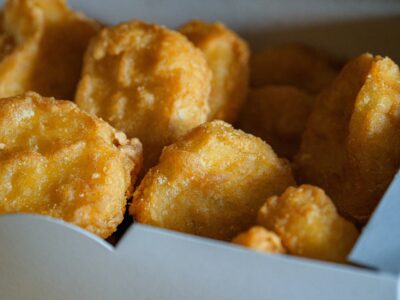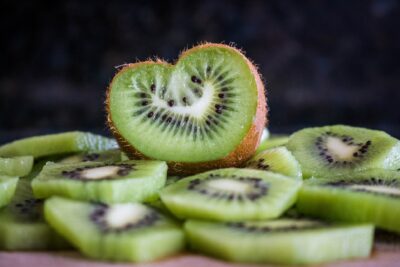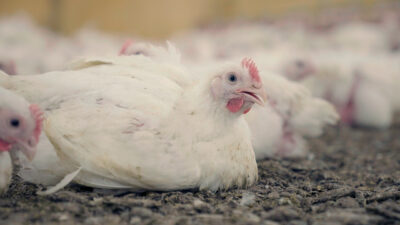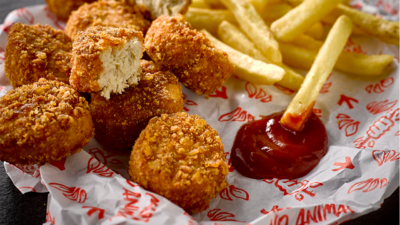Chicken nuggets were invented in a laboratory at Cornell University in New York by food scientist Robert C. Baker in the 1960s. In 2018, Americans reportedly ate 2.3 billion of them, while one in three British people eat them regularly. They have been promoted as a good source of protein for kids who are picky eaters. But they have also been seen as the archetypal cheap processed food, and have been dogged by the question of what actually goes into them.
ARE CHICKEN NUGGETS REAL CHICKEN?
There isn’t a straightforward answer to this question. Chicken nuggets are, of course, not just meat, since they also have breading and other ingredients added for flavour and texture. But the amount of chicken in them varies depending on which company made them, and they may not contain the parts of the chicken you would expect — more on that below.
WHAT’S IN CHICKEN NUGGETS?
Some nuggets barely use any chicken meat at all. A study titled “Autopsy of Chicken Nuggets Reads ‘Chicken Little’” published in 2013 analysed the makeup of chicken nuggets from two American fast food outlets and found that they contained fat, bone, nerve, and connective tissue. “Chicken nuggets are mostly fat,” the researchers concluded, “and their name is a misnomer.”

Image from “Autopsy of Chicken Nuggets Reads ‘Chicken Little’” shows a chicken nugget made up of 50% skeletal muscle, with the remainder composed primarily of fat, with some blood vessels and nerve present.
McDonald’s McNuggets are made with chicken breast meat blended up with seasoning and chicken skin. They also contain potassium chloride — a synthetic salt additive, water, glucose syrup, and vegetable oils, among other ingredients. The breading is made with corn and wheat flour. Some fast food nuggets contain other additives like food colouring.
Nuggets sold in supermarkets can be similar in composition to ones from a fast food chain, such as Bird’s Eye Chicken Shop Battered Chicken Nuggets. They are made of 51 per cent chicken breast, with the other 49 per cent made up of the ingredients in the batter, including flour, vegetable oil, and raising agents. Some brands are definitely more cagey about what part of the animal that the meat comes from, only listing “chicken” as the main ingredient. You’ve got to wonder what they’re not telling us.
HOW ARE CHICKEN NUGGETS MADE?
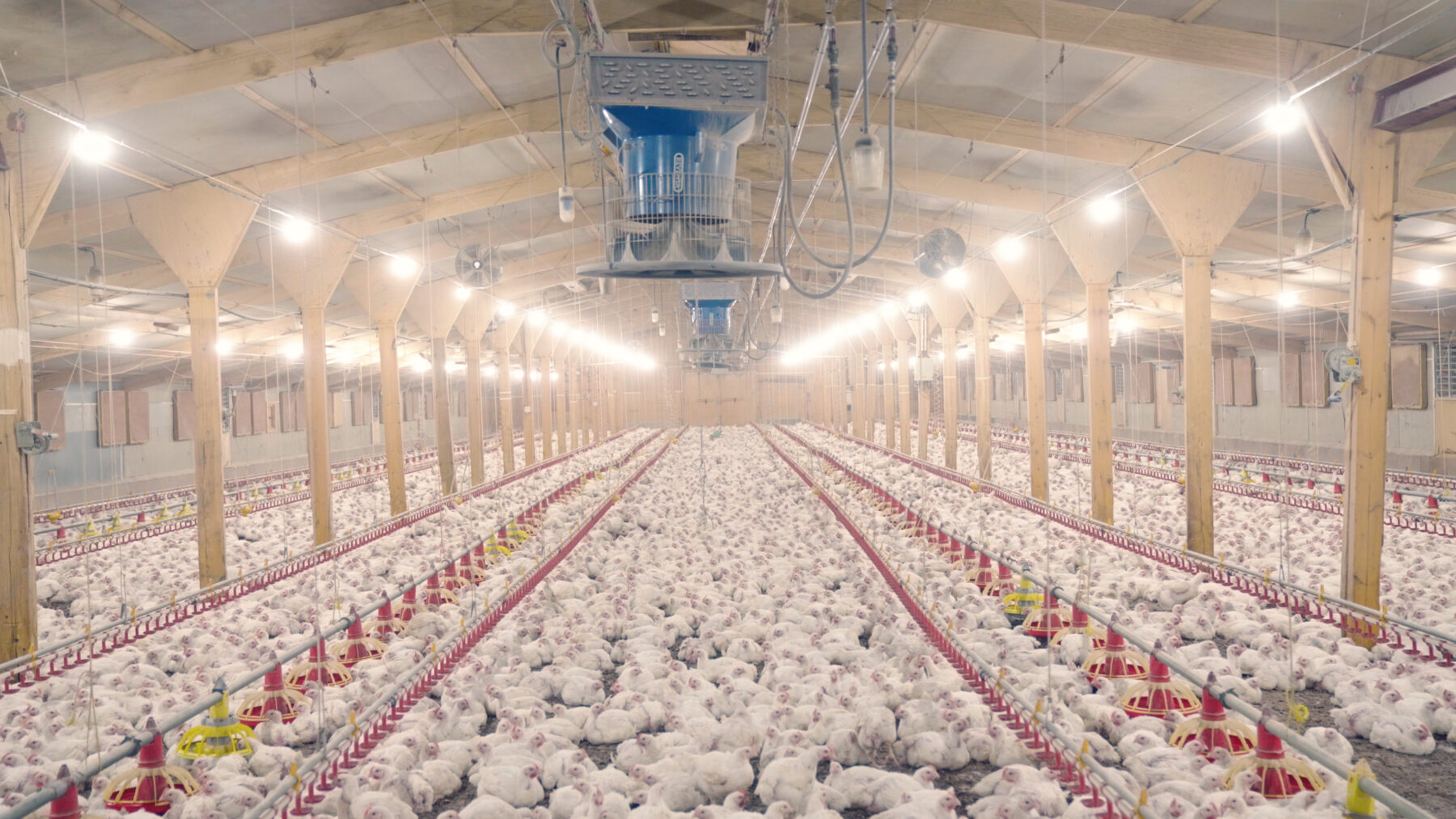
CONFINING CHICKENS IN CROWDED SHEDS
You don’t get billions of nuggets every year without a lot of chickens being bred, farmed, and slaughtered. The majority of the birds trapped in this system are raised inside factory farms. They arrive there at a day old after being born inside an industrial hatchery. Throughout their short lives, they never see daylight, feel the earth beneath their feet, or breathe fresh air. The sheds are usually barren, providing no source of enrichment for the chickens. For intelligent birds, this is nothing short of cruelty.
Around 25,000 birds are kept together in each shed, but in some cases, there can be as many as 50,000, with 19 birds for each square metre of floor space — that’s a little bigger than your average flatscreen television. This setup makes it hard for the chickens to move around properly and can cause stress, weakening the chickens’ immune systems.
In the European Union, the litter in the shed is cleaned out after each flock has been sent to slaughter, meaning the chickens live on top of their own waste for the duration of their lives. But, worryingly, this is the best case scenario and elsewhere, multiple flocks may have to live and breathe in the stench and pathogens of previous flocks’ litter. No wonder ill-health and disease is rife.
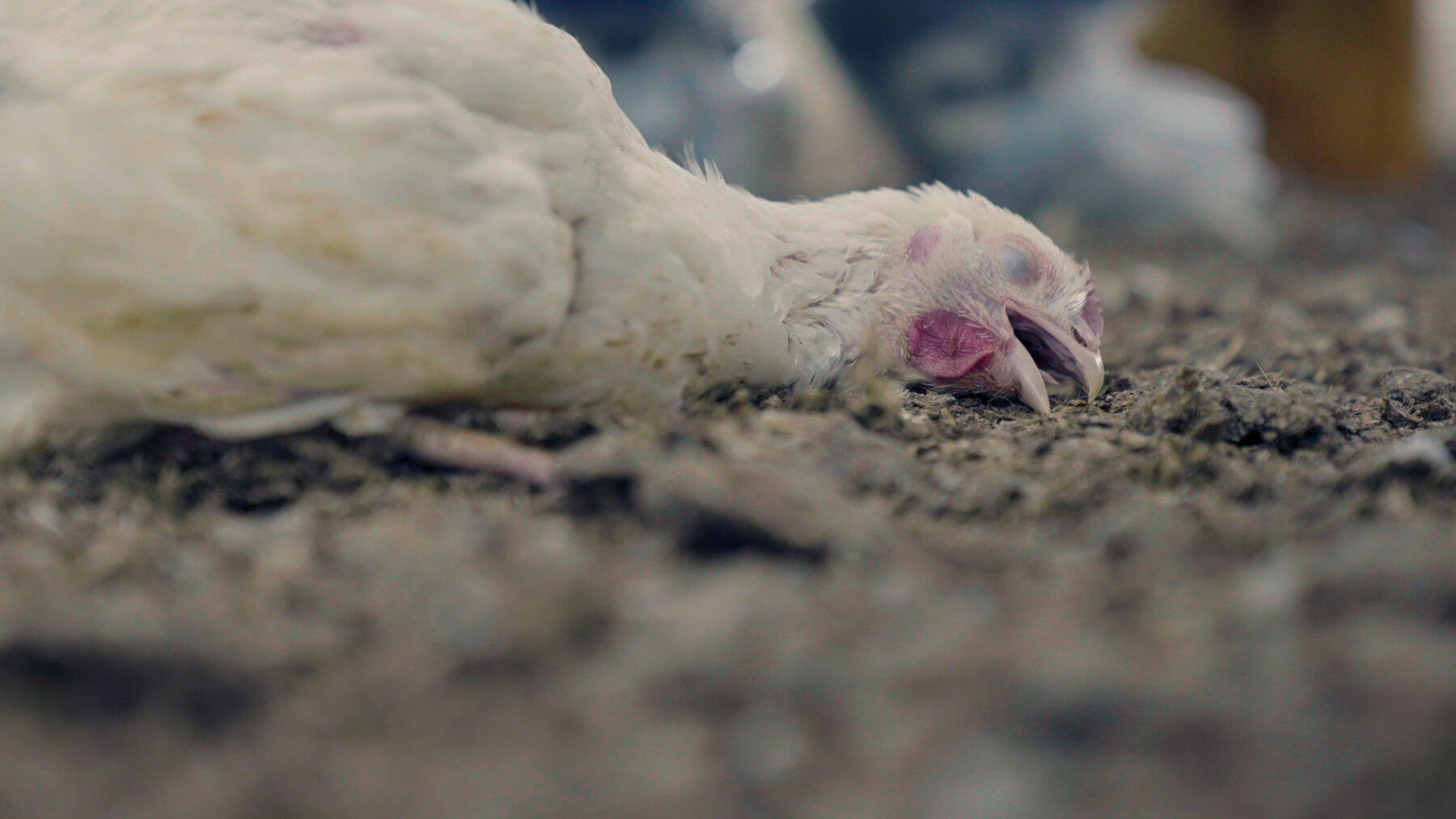
The reality of life for these chickens has been captured on several occasions by undercover investigators, including VFC’s recent exposé of a farm that had featured in a KFC advert. The VFC footage showed dead, dying, and lame chickens left to suffer. Chickens have been filmed unable to reach water troughs that are raised too high and suffering from burns due to the ammonia in the urine and faeces soaking the floor. Hundreds, sometimes, thousands, of birds from every shed do not survive the conditions and die before they reach six weeks old.
GIVING CHICKENS ANTIBIOTICS
Crowded, stressful conditions make chickens more susceptible to disease, so they are given antibiotics both to treat illness and to prevent it. But this reckless overuse makes antibiotics less effective when we come to treat disease in humans.
In response to growing concerns about antimicrobial resistance, and the role that animal farming plays, some countries are trying to decrease the amount of antibiotics used on farms. But globally the use of antibiotics in chicken farming — and all animal farming — is still worryingly high, contributing to a crisis of antibiotic resistance as bacteria adapt to the drugs. Residues of antibiotics have been found in chicken meat around the world.
Another reason antibiotics are used in chicken farming is to promote growth. It is banned to use them as growth promoters in the EU, the UK, and US, but is still practised elsewhere. Growth promotion means greater profits, and this is a powerful incentive for farmers to keep using antibiotics, even under the guise of disease prevention. Of course, if farmers really wanted to prevent disease, they would not lock up tens of thousands of stressed, immunocompromised birds together in a filthy shed.
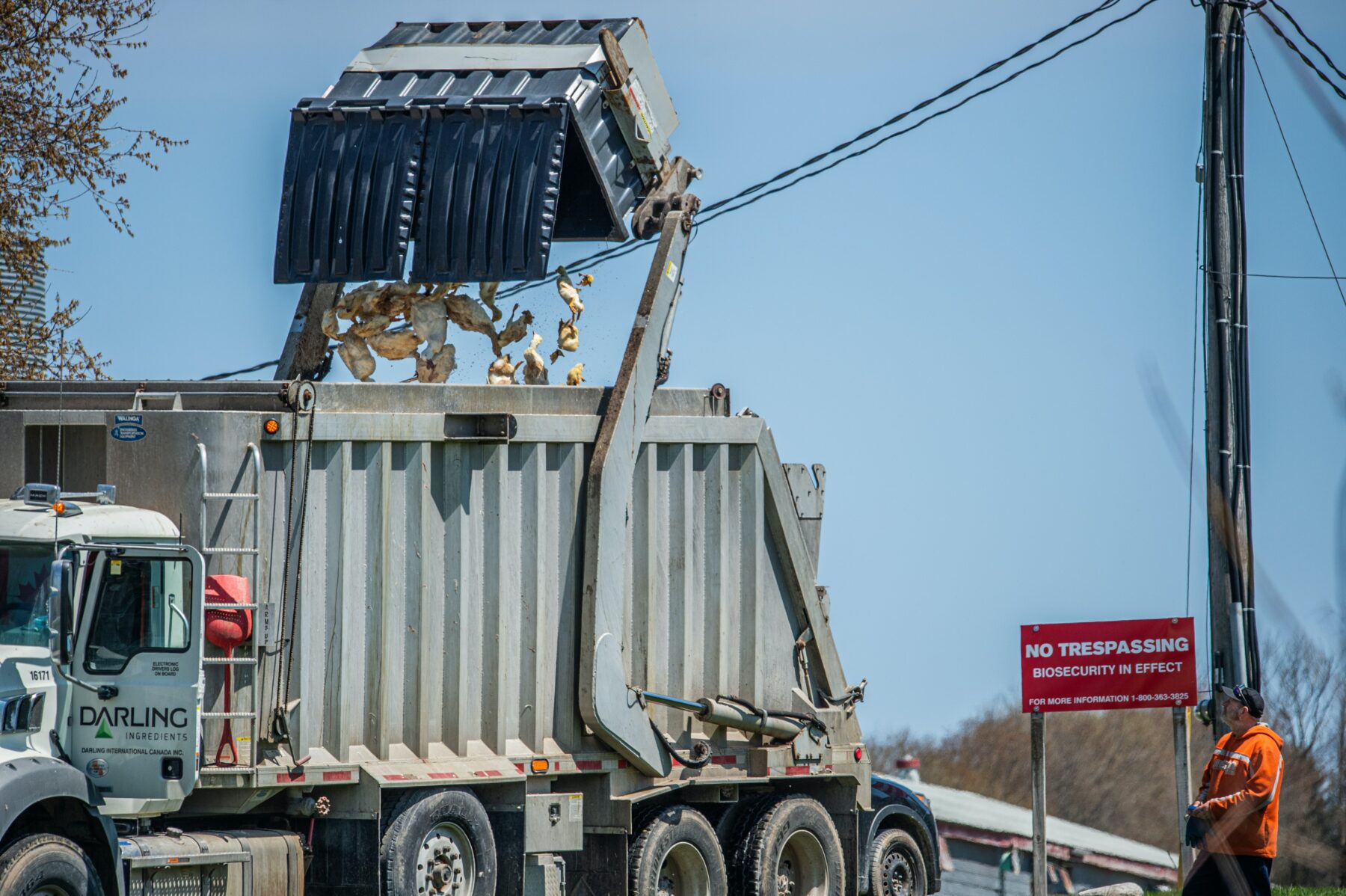
DISCARDING WEAK CHICKENS
Baby chicks may be discarded due to being weak or sick before they even get to the farm, with newborn chicks at hatcheries put onto a conveyor belt and the unwanted ones thrown into bins. Of those who make it to the farm, around four per cent die or are killed due to disease and injury in factory farms, while millions more are “rejected” at slaughterhouses in England and Wales every year due to having diseases and defects. So much death, even before we consider the birds whose bodies are eaten.
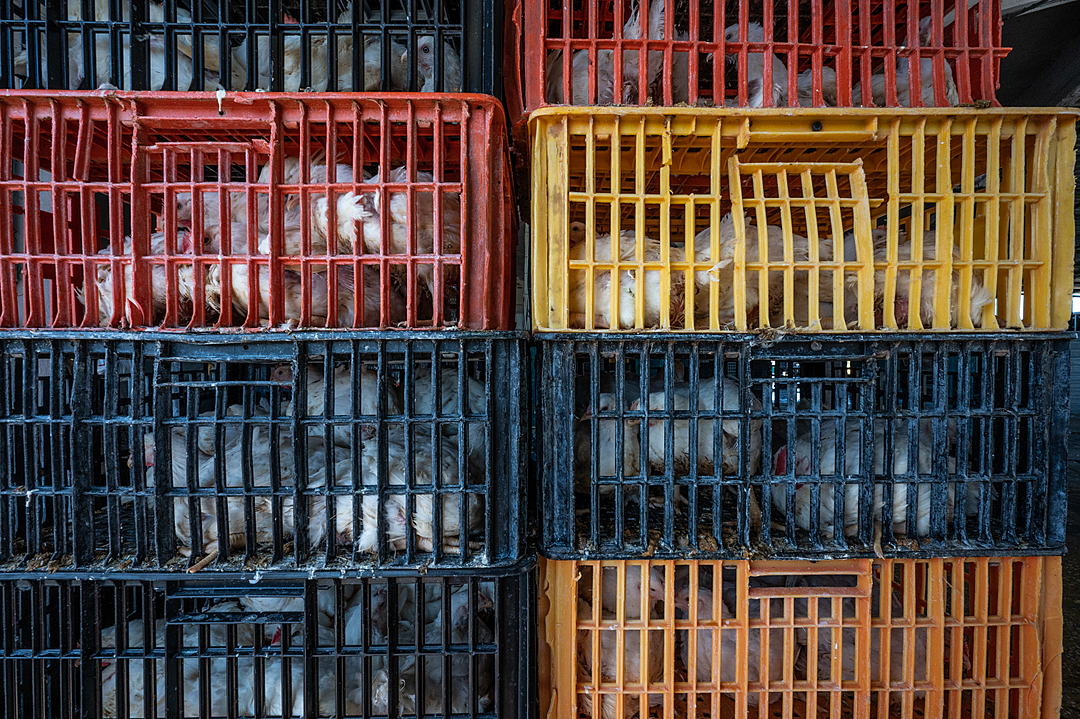
TRANSPORT
Catching gangs gather up the chickens manually — grabbing them by their legs, and sometimes their wings or necks — or they are gathered up mechanically, and then the frightened birds are shoved into crates. Those crates are then stacked onto trucks for the long journey to the slaughterhouse. More than a million chickens die during transport in Britain each year and hundreds of thousands arrive at slaughterhouses with fractures and bruising, indicating rough handling and the unsafe way they are loaded onto trucks and transported. In the UK there is very little protection for animals during transport. It’s not even illegal to transport them during extreme weather such as heatwaves.
SLAUGHTER
More and more chickens in the UK are killed by gas. They stay in the crates they were transported in and are put into a gas chamber where they are killed with carbon dioxide or other gases. This at least eliminates handling the chickens at the time of slaughter, but a painless death is far from guaranteed. While the chickens are supposed to be rendered unconscious by the gases, the wrong concentrations can cause suffocation and severe suffering.
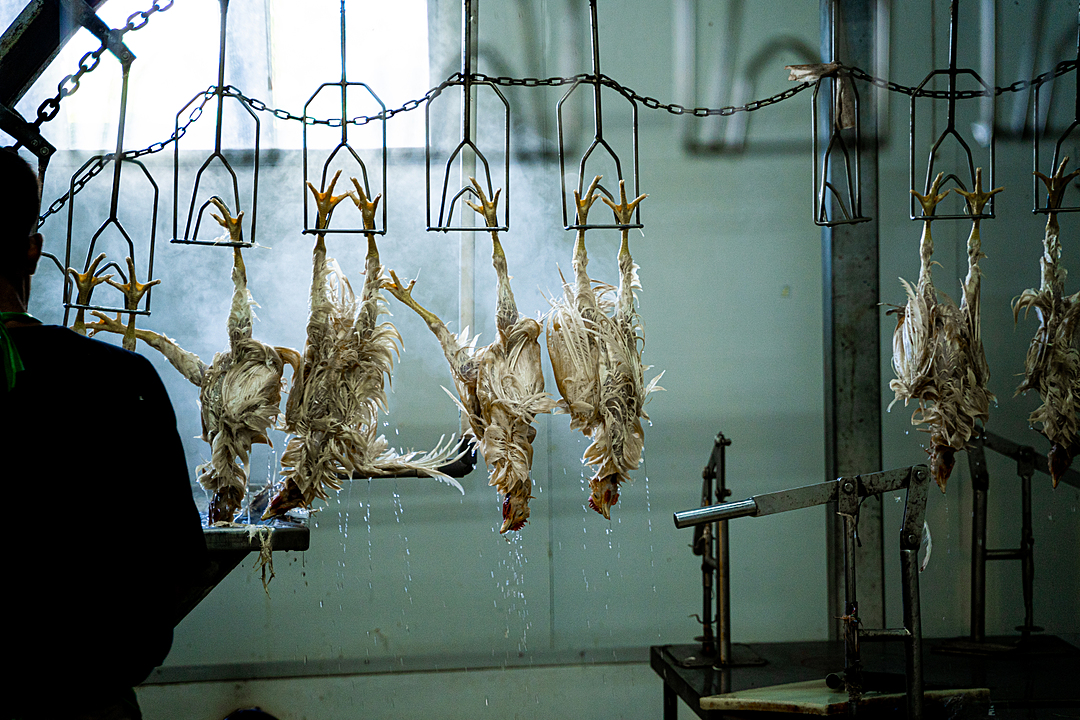
The other common method involves hanging still-conscious chickens upside down by their legs on metal shackles on a moving conveyor belt. Imagine being shackled by painful or broken legs — a common injury for farmed chickens. The birds are then dragged through an electrified water bath, which is intended to stun them, before the conveyor belt moves them along to have their throats cut by a machine. Stunning is not effective in all cases meaning many birds go to the knife fully conscious.
Finally, their bodies are dropped into scalding water to loosen their feathers and prepare them for butchering.
DEBONING AND GRINDING
There are machines that do the work of removing the bones from the chickens’ bodies and pulling their bodies apart. The bits used for nuggets are ground up and blended with other ingredients, such as seasoning, to make a uniform paste.
SHAPING AND FRYING
The meat paste is mechanically shaped, coated in a batter, and fried. McDonald’s nuggets are only partially fried to set the batter, leaving the chicken inside raw, as they go through the final frying process in the restaurant kitchens.
ARE CHICKEN NUGGETS UNHEALTHY?
They’re certainly no health food!
CHICKEN NUGGETS NUTRITION FACTS
The nutritional profile of chicken nuggets varies depending on what’s in them. In the worst cases, as the “Autopsy of Chicken Nuggets” study showed, they can mostly contain fat and have little nutritional value. Some are also high in salt and sugar. Frequent consumption of fried foods has been linked to coronary disease, heart failure, diabetes, and hypertension.
THE TRUTH ABOUT CHICKEN NUGGETS
ANIMAL SUFFERING
Billions of chickens suffer short, stress-filled, desperate lives and inhumane deaths. Chickens are clever, curious, social animals, with big personalities and a love of life. When confined to factory farm sheds, they get almost no opportunity to engage in natural behaviours or to express their own personalities.
The rapid growth they are specifically bred for in modern farms makes heart disease and lameness all too common. By the end of their short lives, many are unable to stand, let alone move freely, not that they even have anywhere to go.
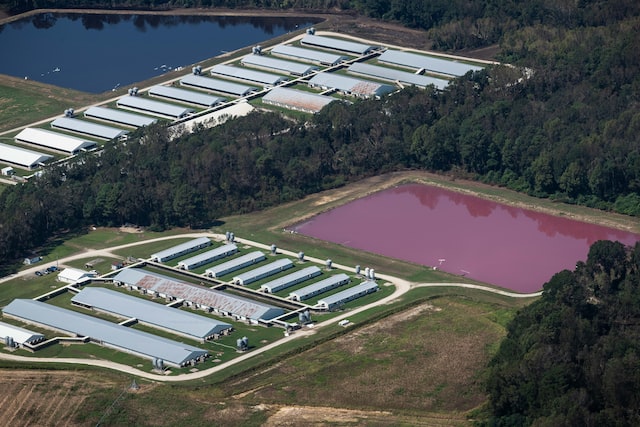
ENVIRONMENTAL POLLUTION
The boom in chicken farming in the past few decades has led to massive environmental problems. Chickens are given feed made mostly from soya, which often comes from deforested areas of South America. Deforestation releases greenhouse gases, decimates wildlife, and makes ecosystems less resilient to climate breakdown. Industrial chicken farming also produces huge quantities of manure which is spread onto fields as fertiliser and runs off into waterways, turning rivers like the Wye toxic and deadly to wildlife.
HUMAN HEALTH IMPACTS
Apart from chicken nuggets being potentially quite unhealthy to eat, especially if you are regularly consuming them, industrial chicken farming is a risk to all human health. In areas where intensive farms are concentrated, ammonia emissions can exceed critical limits, worsening particulate matter that is dangerous to human health. This affects farm workers as well as anyone who lives near an intensive farm. In addition, intensive chicken farms have helped to propagate new strains of bird flu, which can be deadly to people. Infectious disease experts have warned that a bird flu pandemic in humans is “on the horizon”.
CONCLUSION
Chicken nuggets may have a reputation for being an easy snack food, but they are the final product of a cruel, reckless, and polluting system of food production. With questionable nutritional value, consumers should ask if they are worth the cost to animals and the environment. But they needn’t give up the taste of chicken nuggets altogether; there are a growing number of cruelty-free vegan versions to choose from that taste just as good and are kinder to animals and to our shared home.

